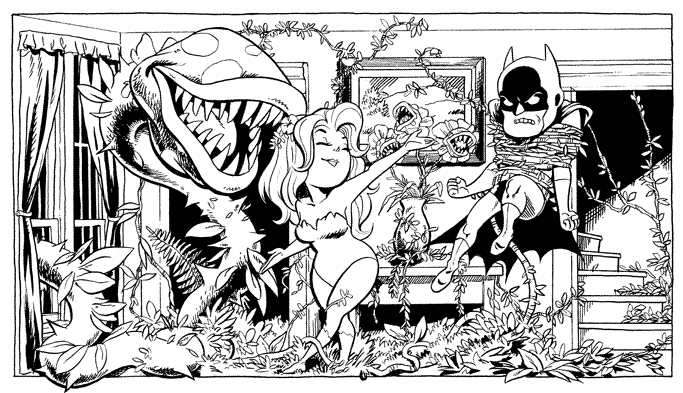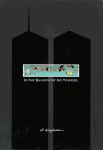By Larry Niven, John Byrne, Matt Webb
I am disappointed to discover you so bound up with myth and ritual
- Ganthet
Green Lantern: Ganthet's Tale was an odd experiment from DC that never panned out. It got lost between the shuffle of more high profile events like
The Death of Superman and
Knightfall, and the soft relaunch of
Zero Hour. I couldn't find the book for sale on DC's website during a recent search. Its primary claim to fame was that it introduced the character
Ganthet, and is often credited for getting the ball rolling for
Hal Jordan's controversial heel turn during the infamous
Emerald Twilight. But its subtext was basically ignored by succeeding writers. And that comes as no surprise. Noted science fiction author
Larry Niven was hired to write "Ganthet's Tale" long before DC started touting mainstream talents like
Brad Meltzer or
Allan Heinberg. But unlike those guys, Niven was perfectly attuned to the SF underpinnings of superheroes, and especially of
Green Lantern. A little too attuned as it turned out, because he revised the history of the
Green Lantern Corps in such a way that was far more rationally outlined than the rest of the DC Universe steeped in "myth and ritual".
Geoff Johns,
Jim Lee, and especially
Grant Morrison,
would probably have hated writing for it.
Anyway, spoilers ahead:
You see, the GLC have their own version of the fall from grace and original sin. A long long long time ago, a brilliant scientist named
Krona dared to break his society's greatest taboo - studying the origin of the universe. He builds a machine that allows him to peer back to the very beginning of time. What he sees is an almighty hand fashioning a proto-universe out of the void. His machine then mysteriously explodes. Krona is punished for his crime, but from his act of disobedience, evil is born into the universe. Knowledgeable GL fans will tell you that guilt over Krona's behavior eventually leads to future generations of his race, now called the
Guardians of Oa, into founding the GLC to wipe out evil from the universe.
"Ganthet's Tale" begins with a rehash of these events, but ends it with the narrator concluding "This is, of course, a lie." The narrator turns out to be a Guardian named Ganthet, who then proceeds to draft Hal Jordan into helping him locate an Earth-based offshoot of the Guardians. Funnily enough, we know them as
Leprechauns. After finding one such community and revealing to them their alien birthright, an elderly male named
Percival chooses to take Ganthet up on his offer. So the trio fly into space, where Ganthet reveals to them the real story of the origins of the Guardians of Oa.
The myth, as it turns out, is an elaborate ruse to hide the fact that the Guardians evolved over time, just like every other life-form. Their origins are on the planet Maltus, where the native
Maltusians first began to exhibit the abilities that would one day culminate in the Guardians and the GLC. But its misuse, especially amongst the young, led to the decimation of the planet's' ecology, necessitating a mass exodus to find other inhabitable worlds. While most attempts to rebuild Maltusian society failed, one colony on the planet Oa succeeded after a fashion - the Guardians. In order to protect themselves from external threats, they founded the GLC. But they also projected sophisticated illusions backwards in time to deter attacks on their past. As Ganthet explains "The further back you look, the more powerful we become, until, like Krona, you gaze upon the creation, and behold us as the very progenitors of the universe itself." Krona, himself a Maltusian, was an unintended victim and scapegoat of this whitewashing of history.

There's quite a bit more that's revealed through various twists and turns. I get the impression that Niven is cramming as many ideas as he can within a 60 page comic book. He glosses over several plot points and fails to develop the voices of most of the supporting characters. Percival and especially Hal are reduced to slow-witted sidekicks, and the main antagonists
Dawlakispokpok and
Thwarcharchura come across as slightly generic. The only memorable character is Ganthet himself, whose sharp tongue often reminds me of a prickly professor urging his students to keep up with him. And that's awesome! He gets the best lines in the book. And Niven's smart characterization will never be sucessfully duplicated by future GL writers. The art supplied by
John Byrne uses the sketchier style he developed after he started inking his own pencils. It's efficient. It gets the job done, but it's a bit too bland to look at for my tastes. It doesn't do anything to evoke the grandeur of the book's cosmic setting. This is a dense read that's long on exposition and short on the kind of action fans of the genre have come to expect. The book's two big fight scenes are pretty restrained, with an emphasis on brains beating brawn. At one point Ganthet chastises Hal for objecting to a certain tactic with "That is because you insist on thinking like a warrior, instead of a scientist." Oh snap!

So how does "Ganthet's Tale" stack up, nineteen years later? It's relatively ambitious, but feels truncated. Niven puts some serious effort into wedding hard science with the superhero genre. But the results fall short. Perhaps he's taking it all too seriously. Perhaps more pages were needed to develop his ideas. Perhaps with more freedom, he'd end up with something fractionally closer to the expansive space operas he built his reputation on. Who knows? There's a familiar SF feel in his ability to conjure up alien civilizations that have been developing for countless eons. Niven takes a big picture approach to the rise and fall of empires, the fabrication and perpetuation of falsehoods, science vs. religion, the battle of the sexes, and of an indifferent universe ultimately devoid of absolute good or evil. I still possess a good deal of affection for what Niven was trying to do. But if fans remember "Ganthet's Tale" at all, they probably treat it as the setup to Hal becoming a villain.






























